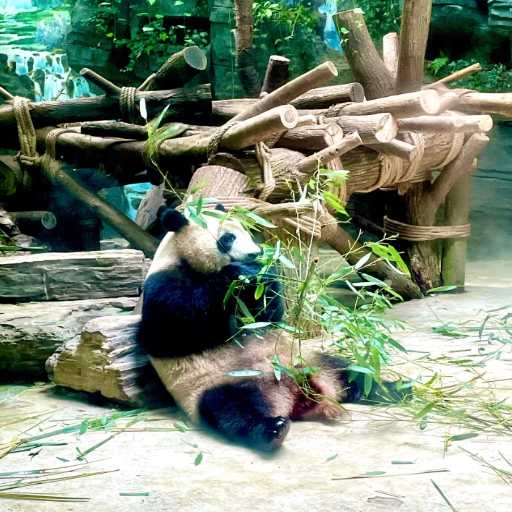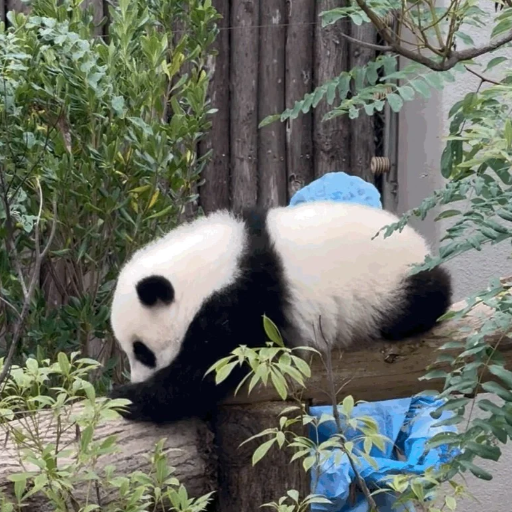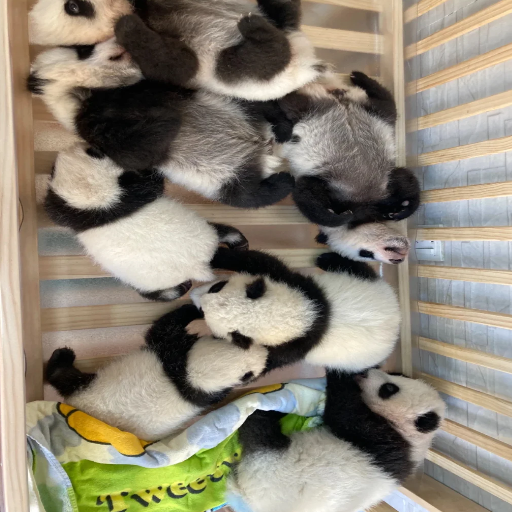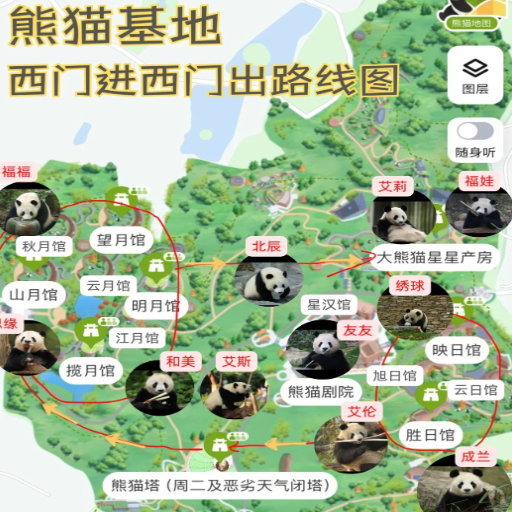The gorgeous center of Sichuan Province, Chengdu, will tickle your fancy if you are a world traveler or a panda lover. With my guide, you will know everything you need about the Chengdu Panda Tour you will be taking in 2025. From visiting the cultural and natural landmarks around the region to the famous Chengdu Research Base of Giant Panda Breeding, this Plam Pandas is all you need to plan the adventure of a lifetime.
I know the best times to visit Chengdu, how to get your hands on the tickets, and the unique ways to make your trip smooth sailing. Chengdu boasts mouth-watering food and captivating local lore and is served with beautiful transportation, so your journey is filled with excitement and equally enriching. You will know the region of Chengdu whether you are in for viewing the panders or indulging and drowning yourself in the beauty of Chengdu. Start planning your unforgettable panda tour to Chengdu in 2025 today!
What Makes the Chengdu Giant Panda Breeding Center a Must-Visit?

What Makes the Chengdu Giant Panda Breeding Center a Must-Visit
The Chengdu Giant Panda Breeding Center is a recommended stop for passionate conservationists who wish to learn more about these unique animals. As one of the leading centers in the world, it conducts research, breeding, and conservation of giant pandas. Visitors at the Center can see pandas in their naturalistic habitats, a rare experience. The Center’s educational exhibits about the environment and observing adorable cubs and adult pandas make it unmatched. Its soothing atmosphere, rich bamboo forests, and masterfully organized tours guarantee an unforgettable and insightful experience.
Understanding the Role of the Chengdu Panda Base
Through research, breeding, and public education, Chengdu Panda Base plays a significant role in conserving giant pandas and other endangered species. The Base restores habitats, genetic variation, and species behavior to help make this symbol of China sustainable for the future.
Key aspects include the following:
- Breeding Success Rates: The Center has an established breeding success rate, which helps stabilize the panda bear population.
- Habitat Design: Enclosures are designed for optimal panda living conditions and natural habitats. The bear barns are enriched with bamboo forests and are 6000-8000 square meters per enclosure.
- Medical Facilities: Specialized veterinary technologies, such as ultrasound, radiology, and nutritional labs, are available for panda diagnosis and treatment.
- Research Contributions: More than 40 scientific papers are written yearly on behavioral ecology, genetics, and nutrition, focusing on conservation efforts.
- Global Panda Collaborations: Collaborations with more than twenty zoos and research centers internationally facilitate the exchange of information and collaborative breeding projects.
With the rest of the world in mind, the Chengdu Panda Base actively preserves biodiversity and ensures that its resident pandas lead healthier and happier lives.
Inside the Giant Panda Breeding Facilities
Like any critical scientific facility, the Chengdu Panda Base has equipped its breeding facilities with the latest technologies that guarantee safety and comfort for the pandas. Maximizing the overall welfare and breeding success of this vulnerable species takes the focus on habitat simulation, reproductive biology, and neonatal care.
- Habitat Simulation: The enclosures have been modeled after the natural bamboo forests of China. The temperature is maintained between 20 and 24 degrees Celsius, and humidity is controlled between 50% and 70% to ensure the pandas are as comfortable as possible.
- Reproductive Biology: Breeding pandas is challenging, considering that the animal’s reproductive window is 24-72 hours a year. Other forms of breeding and advanced techniques, like AI insemination, are used to improve success rates.
- Neonatal Care: Newborn panda cubs are one of the most adorable creatures, weighing roughly 90-130 grams. The facilities have been designed with incubators, thermal mattresses, and 24-hour monitoring to ensure the cubs’ growth and health metrics are on target. Veterinary teams also adhere to strict feeding timetables, using a blend of supplements formulated with panda milk.
- Research and Monitoring: Staff are assisted by highly specialized equipment, such as ultrasound machines and genetic testing devices, to comprehend health and behavioral patterns. Routine health examinations ensure that the pandas are in good shape.
The Chengdu Panda Base combines these technical aspects within an overarching conservation framework to enhance breeding success and increase the global population of giant pandas.
Getting Up Close: Panda Enclosure Experiences
From my firsthand experience, visiting the panda cages is truly wondrous. Tourists at the Chengdu Panda Base can witness these enormous bears in specially constructed enclosures that simulate their natural habitat. You can see the pandas eating bamboo from the large, transparent windows, playing with their enclosures, or sleeping. The enclosures are pristine, with temperature controls that maintain the ambient temperature at 18-24 degrees Celsius, humidity levels between 50-60%, and specially created sleeping spaces for the pandas. Alongside such visits, lectures by panda behavior and conservation specialists heighten the experience to an extraordinary level.
How to See Pandas in Chengdu: Planning Your Panda Tour

How to See Pandas in Chengdu: Planning Your Panda Tour
Picking the right time and location for your panda tour in Chengdu is crucial, as it will significantly enhance your experience. Pandas are most lively while eating, so early morning, around 7:30 – 10 AM, is the best time to visit. Some of the most popular sites include the Chengdu Research Base of Giant Panda Breeding, Dujiangyan Panda Base, and Bifengxia Panda Base, all of which showcase unique experiences. If you’re looking to save time, it is wise to purchase tickets in advance online during peak tourist seasons. For those looking for more hands-on experience, consider joining a volunteer program where you can feed, play with, or help clean the panda bunks. Ensure you are dressed comfortably while paying attention to the outlined location rules for the visitor and panda’s safety.
Best Time to Visit the Chengdu Panda Sanctuary
Chengdu Panda Sanctuary is best attended in the low-season months of March to May and September to November. The mid-range months are pleasant and best suited for enjoyable outdoor activity since the pandas are most likely to be active in their outdoor enclosures. The mid-range times of the day, such as mornings from 8:30 AM to 10:30 AM, are best suited as pandas are brimming with a form of energy that leads to various activities such as eating and playing. Always check the weather, Chun, as it can be very humid and rain often, particularly during the October summer months. Overall, following these recommended times will assist in making your experience more comfortable and unforgettable.
Booking a Private Tour: What to Expect
Booking a private tour in Chengdu for panda viewing will allow you to create your own experience. Such tours conveniently include private transport, a guide who speaks your language, and a schedule that adapts to your needs. The primary focus of the tour is usually the visit to the Chengdu Research Base of Giant Panda Breeding. Still, other cultural sites, including Jinli Street or Wuhou Shrine, are sometimes scheduled for the tour.
With private tours, tourists can often visit panda enclosures earlier than other tourists, enhancing the experience of watching the cute animals. Depending on the package, additional activities such as feeding the panda or volunteering may be incorporated into the tour, giving the visitor a more interactive experience.
Here are some key technical details to consider when booking:
- Group Size: Most private tours have a minimum of 1 person and a maximum of 6 for a more personal experience. Bigger groups may need to be booked in advance.
- Duration: Most tours take 4 to 8 hours, depending on the chosen activities and the distance you need to travel.
- Cost: The tours typically charge between $80 to $200 for each person. They will include meals, entrance fees, and other special activities that will dictate the price.
- Transport: For the round trip, you will be provided with a standard air-conditioned vehicle, which will also stop at your hotel if you are staying there.
- Languages Supported: According to the operator, guides usually speak English and Mandarin and may know other languages.
When confirming your reservation, ask about cancellations, extra charges, and if they have pre-approved permits for the volunteering events. Using a trusted operator to book a tour online guarantees an efficient and orderly excursion.
Exploring Pandas Near Chengdu: Top Attractions
Learning about and observing the unique pandas is crucial when traveling through Chengdu. The panda enclosures, the Panda Breeding and Research Center, and the Wolong Panda Reserve are must-sees.
- Chengdu Research Base of Giant Panda Breeding: Centrally located within 10km of Chengdu, this facility is ideal for an easy half-day trip. Travelers can closely observe all aged pandas in a more naturalistic setting. It is advised to visit during the morning, especially during feeding times. The entry fee is about 55 CNY per person.
- Dujiangyan Panda Base: 65km off Chengdu, this center focuses on panda rehabilitation and offers volunteer experiences, including meal preparation and enclosure cleaning. The entry fee and the cost for volunteer programs are between 1000 and 1500 CNY, depending on the selected tasks.
- Wolong National Nature Reserve: Approximately 120km from Chengdu, Wolong is also a panda research center, making this region a nature reserve under research. It is ideal for those searching for a detailed experience in a less inhabited and more beautiful environment. The entry fee is roughly 80 CNY, and guided tours incur additional costs.
As mentioned earlier, as slots can fill up quickly, purchase tickets and volunteer permits for the sites in advance. Remember to pack your walking shoes and camera to maximize your panda experience!
Can You Hold a Panda at the Chengdu Research Base?

Can You Hold a Panda at the Chengdu Research Base
The Chengdu Research Base restricts visitors from panda cuddling for the moment because of safety issues and strict conservation undertakings. Although visitors cannot pet the pandas, they can still watch these stunning animals partake in their habitat’s features and learn about various conservation efforts.
Understanding Panda Volunteer Opportunities
Gaining a more intimate insight into the behavioral patterns of pandas and learning how to take care of them is made possible through panda volunteering, and their conservation can be supported. Volunteers at the Dujiangyan Panda Base can care for the pandas by cleaning their enclosures, preparing their meals, which include bamboo, fruits, or even special panda ‘cakes,’ and watching their reactions. For most volunteer programs, being at least 12 years old, physically fit, and willing to work a full day is compulsory. Minimum strain or damage to the animals is the highest priority for the base, and as such, the volunteers’ uniforms must be cleaned for hygiene purposes. At the same time, a distance must be kept unless staff instructs. The experience gained from these programs is incredibly fulfilling and vital in saving this endangered species.
Experiencing a Day Tour: Panda Holding Insights
By holding activities like the Panda Retreat, provided at certain conservation bases such as the Dujiangyan Panda Base in China, it is possible to have and help conserve the Panda bears. These programs are planned and follow well-set guidelines to protect the pandas and those involved. Let’s delve deeper into the most important details:
Eligibility and Guidelines:
- Age and Health Requirements:
- Typical participants must fall within the age brackets of 12 and 65 years.
- Safety during the program will need to be ensured by having good health.
- Advance Booking:
- Due to limited space, clients are frequently advised to book in advance (often weeks ahead).
- It is usually between $200 and $400, and all of the money goes to the conservation of Panda Bears.
- Duration and Structure:
- Sessions for holding pandas are usually 20-30 minutes, so stress on the panda is minimal.
- Other educational activities may include feeding the Panda bear and cleaning its habitat.
Aspects for Panda Holding:
- Mandatory Sanitization:
- Participants must wear sterilized uniforms, gloves, and masks to stop the pandas from getting infectious diseases or germs.
- Participants are required to use sanitizers on their hands before entering specific interaction zones.
- Appropriate Behavior:
- It is preferable to move slowly and quietly to not scare the pandas.
- Direct physical contact, such as hugging, is limited when staff members are present to monitor the interaction.
- Sanitized Facility Standards:
- The interaction area is cleaned and sanitized every day.
- Staff maintains a clean environment following rigorous veterinary standards.
Conservation Impact:
Those who participate in a panda experience-holding program are guaranteed a fantastic experience. They also help contribute to the conservation center’s finances, enabling them to care for one of the world’s most precious endangered species.
Safety and Ethical Considerations
Regarding safety and ethics, I think ensuring the welfare of the pandas and visitors is essential. Since pandas are very delicate creatures, putting them under additional stress is not ideal, so regulating interactions by allowing only a limited amount of physical contact is so important. As previously explained, keeping the room clean helps to prevent pandas from getting sick. For ethical reasons, these programs must be aimed at conservation, ensuring money is spent on protecting and maintaining the areas.
Key Aspects:
- Interaction time limit for visitors – generally no more than 2-3 minutes so that the panda’s stress levels do not increase.
- Visitor group size – kept small (5-10 people per session) to maintain a relaxed environment.
- Physical distance – at least arm’s length unless there is supervised contact.
- Health screenings for visitors – ensuring communicable diseases will not be brought to the pandas.
These measures provide a controlled and safe environment for interaction while supporting conservation objectives, which allows them to work ethically.
Where to Find Baby Pandas and Panda Cubs in 2025?

Where to Find Baby Pandas and Panda Cubs in 2025
Young panda bears and cubs live in specific panda reserves, breeding centers, and zoos with conservation programs. The Chengdu Research Base of Giant Panda Breeding and Wolong National Nature Reserve in China is famous for breeding and conserving pandas. Furthermore, some overseas zoos, such as the Smithsonian’s National Zoo in Washington D.C. and Zoo Berlin, have panda cubs as a part of their collaborative conservation programs with China. These centers aim to conserve pandas, so it is possible to see baby pandas and help preserve them.
Discovering the Panda Nursery at the Breeding Center
The panda nursery at breeding centers is a fascinating place dedicated to caring for and developing newborn cubs. Panda cubs are born extremely weak and small at about 90-130 grams, roughly the weight of a stick of butter. The nursery has temperature-controlled incubators of about 77-86 degrees Fahrenheit and 50-70 percent humidity to simulate a mother’s caring environment. Specialized staff and veterinarians ensure the cubs are getting enough attention, including meals every two to three hours, consisting of panda milk replacer and natural milk.
Most of these panda nurseries are equipped with observation rooms that aid researchers and visitors in observing the crucial initial stages of panda development. Supervisory hardware, such as video surveillance cameras, enables monitoring of possible pain or sickness 24 hours a day. Organizations that fund panda nurseries play a crucial role in improving the cubs’ chances of survival in captivity and the wild, helping further a critical global conservation issue.
The Lifecycle of the Giant Panda: From Cub to Adult
The lifecycle of a giant panda is marked by unique stages, with each stage needing precision and exertion. Panda cubs, at birth, are the most helpless creatures imaginable—with the inability to see and extreme underdevelopment. They weigh only about 3.5 to 5.3 ounces, which is 1/900th of their mother’s weight. During these 2-3 months, a cub can only do milk and some range of motion.
Cubs begin developing eyesight by four months of age, along with the signature black and white patterns they are known for. They begin to crawl, but only for the safety of Mother’s warmth. By the time they reach six months, they start succumbing to instincts of exploration and play, and during this stage, baby pandas begin being able to chew bamboo, which will serve as their primary diet later on.
Around the time cubs turn 1, they gradually shift from milk to bamboo as their primary source of sustenance. This leads to fast growth during this stage of life, with weights increasing to about 60 – 100 pounds (27 – 45 kilograms). By the time they reach 1.5 – 2 years of age, cubs start to display some independence from their mothers, allowing them to begin new territories.
For both females and males, sexual maturity begins from 4 to 6. Adult giant pandas weigh between 200 – 300 pounds (90 – 135 kilograms) and prefer solitude. Each panda needs a territory of 1.5 – 2.5 square miles (4 to 6.5 square kilometers). In the wild, pandas typically live to be around 20 years old, whereas in captivity, they can live to be 30 years old due to better diet, healthcare, and safety.
Parental care of Giant pandas can help us understand why conservation efforts are essential. The survival of this species, which is currently endangered, depends on extensive public relations activity, captive breeding programs, and habitat conservation. If we assist the giant pandas through each public relations stage, they may have a fighting chance in the wild and conservation centers around the globe.
Conservation Efforts: Protecting the Future of Pandas
Three problems need to be solved to ensure a future for pandas: habitat destruction, captive breeding programs, and the education of local communities. Conservation groups like WWF help regional governments (which can be very uncooperative) restore bamboo forests, which is necessary to enlarge the existing nature reserves, which are pandas’ giant habitats. Modern reproductive technologies such as genetic engineering and artificial insemination are changing the goal of captive breeding programs from preventing extinction to growing the population of pandas in captivity.
Some basic conservation rules people receive without asking include protecting the panda from hunters, restricting land use to reduce conflict with humans, and monitoring the panda population with satellites. Combining all these rules with anti-poaching violence, ensuring forests cover 70% of the area designated for pandas, and connecting 52,600 hectares of separated lands guarantees pandas’ survival with people’s active help. In turn, these campaigns can make a difference and ensure the future of the surviving giant pandas.
What Are the Best Panda Viewing Spots in the Chengdu Panda Reserve?

What Are the Best Panda Viewing Spots in the Chengdu Panda Reserve
The Chengdu Panda Reserve has numerous remarkable locations where you can view the pandas within their naturalistic enclosures. One of the highlights is The Panda Nursery, where guests can learn how infant pandas undergo nurturing. The Adult Panda Enclosures are prime features that let you witness the daily lives of giant pandas as they are fed and engage in their playful activities. Another highlight is the Red Panda Section, featuring the giant panda’s more petite but equally adorable relatives. For those looking to enrich their experience, educational tours and displays are offered to round out their knowledge.
Exploring the Wolong Panda Center
Located immediately within the breathtaking Wolong National Nature Reserve, Wolong Panda Center is the premier destination for panda lovers. Guidebooks highlight its spectacular conservation features, and the opportunity to appreciate the dainty pandas in these beautiful mountainous surroundings retracts many tourists. There are also essential facilities at the center, such as the Panda Kindergarten, where the infant pandas acquire fundamental skills while being closely watched, and the Panda Breeding and Research Base, where scientists implement breeding strategies about genetic variation.
Key Details:
- Location: Wolong National Nature Reserve, Sichuan, China
- Elevation: Approximately 6,560 feet (2,000 meters) above sea level, providing an ideal cool and humid climate for pandas.
- Area: 200,000 hectares of protected land for wildlife and biodiversity.
- Pandas on Site: More than 50 giant pandas are on site, including cubs of different ages.
- Programs Offered: Guided tours, panda keeper encounters, and other hands-on educational activities.
The center’s combination of conservation, science, and tourism maximizes fulfillment while working to save the giant panda population. Every visit, whether watching pandas frolic or learning about their husbandry, achieves this incredible goal.
Unveiling the Secrets of Panda Research and Breeding
Research and breeding of pandas require the integration of their specialized biology, ecological information, social behavior, and advanced scientific techniques. The reproductive capabilities of the panda are notoriously dismal both in the wild and under human care, which poses a challenge for breeding programs. Following is an account of some of the essential fundamental and procedural steps:
- Reproduction Challenges:
- Panda females have an annual window of 24 to 72 hours when they are fertile; thus, the opportunity for breeding is severely restricted.
- The common practice of artificial insemination is used extensively to offset the difficulties of breaching. Semen is gathered from males and frozen in liquid nitrogen until the short breeding season arrives.
- Nutrition and Health Monitoring:
- Fresh bamboo daily and specially developed nutrient biscuits are provided for the captive pandas, optimizing their diet.
- Sophisticated biometric monitoring systems track health parameters like weight, activity, hormonal changes, and other health markers.
- Genetic Diversity Maintenance:
- Pairs of pandas are bred after analyzing their genetic maps to avoid mating within the same family bloodline, thus increasing the gene diversity of the panda population.
- With the advanced cryogenic freezers, genetic materials can be stored and crossbred in diverse locations within the reserves in the future.
- Neonatal Care and Cub Development:
- Panda cubs are born weighing only 90 to 130 grams, approximately 3 to 5 ounces, and need to be kept in warm, humidified incubators at 86 to 90 degrees Fahrenheit with 60 to 70 percent humidity.
- Caregivers feed the infants formula and use the ‘twin swapping’ method to balance care between the mother and caretakers during the twinning.
- Habitat Simulation and Behavioral Studies:
- Pandas in captivity are put in naturalistic settings, which may elicit desirable behaviors and help in further attempts to reintroduce pandas to the wild.
- Behavioral studies involve analyzing vocalization and social activity to improve the chances of compatibility after pairing.
- International Collaboration and Technology Usage:
- The Panda Research Centers have established international collaborations with zoos and conservation institutions to exchange knowledge and experience.
- Panda behavior in captivity and reserves is monitored remotely and analyzed using cameras and AI technology.
Wolong and other breeding centers integrate traditional caretaking practices with modern technologies to save the species. Every effort, from controlling the environment and overriding genetic manipulations to sophisticated engineering, is indispensable in securing a habitat for giant pandas.
Top Tips for a Memorable Panda Experience
- Visit During Feeding Times
To get the most out of visiting pandas, plan to arrive during the mornings or at feeding times. This is when they are the most interactive and attentive while eating bamboo and moving around their enclosure.
- Choose the Right Season
Spring and autumn are best for traveling to Wolong or Chengdu Panda Base. The pandas tend to be more active in the cooler months, which, combined with the moderate weather, makes visiting even better.
- Book Tickets in Advance
During peak travel seasons, panda research centers can become quite busy in a notorious way. To guarantee entry, online tickets purchased before your planned visit will ensure a smoother experience as your day can be planned accordingly.
- Follow Photography Etiquette
When photographing pandas, avoid using flash, as this may scare them. Instead, utilize long-range cameras and zoom lenses for close-up shots from a distance to avoid bothering and upsetting the pandas.
- Consider Volunteer Programs
For those looking to deepen their experience, try signing up for volunteer programs. Working with gentle giants by feeding or cleaning their enclosures can make you more connected. Before enrolling, remember to check for age, health, and other restrictions.
- Respect Conservations Rules
Respect the center’s regulations, such as avoiding loud noises or being close to them. This guarantees the pandas’ health and your observation without interruptions.
If you follow these pointers, your experience with pandas will most likely be meaningful and unforgettable!
References
Frequently Asked Questions (FAQ)
Q: What is the best time to embark on a Chengdu Panda Tour?
A: The best time to see giant pandas in Chengdu is during the cooler months, from March to May and September to November. During these periods, pandas are more active, offering a better panda viewing experience.
Q: Where is the Chengdu Research Base of Giant Panda Breeding located?
A: The Chengdu Research Base of Giant Panda Breeding, also known as the Chengdu Panda Breeding Center, is located in the northern suburbs of Chengdu, about 10 kilometers from the city center. It is one of the most popular attractions in Chengdu for panda-loving enthusiasts.
Q: Can I hold pandas during my visit to Chengdu?
A: Due to conservation and safety concerns, holding pandas is no longer allowed at most panda bases. However, you can still observe the pandas up close and enjoy a memorable panda-viewing experience.
Q: Are any volunteer experiences available at the Chengdu Panda Breeding Center?
A: The Chengdu Panda Breeding Center offers panda volunteer experiences, during which visitors can prepare food for the pandas and clean their enclosures. This is an excellent way for panda-loving visitors to contribute to panda conservation efforts.
Q: What are the main attractions in Chengdu besides the panda parks?
A: In addition to the panda parks, Chengdu offers a variety of attractions, such as the historic Jinli Street, the serene Wuhou Shrine, and the beautiful Dujiangyan Irrigation System. These sites add cultural richness to your China tour.
Q: How can I visit the Chengdu Panda Breeding Center without a tour?
A: You can visit the Chengdu Panda Breeding Center independently by taxi or public transportation from Chengdu downtown. Tickets can be purchased at the entrance, allowing you to explore the park at your own pace.
Q: What is included in a typical Chengdu Panda Tour package?
A: A typical Chengdu Panda Tour package includes transportation to and from your Chengdu hotel, entrance fees to the Panda Park, and a guided tour of the facilities. Some packages may also include meals or excursions to other Chengdu attractions.
Q: Can I visit other panda bases around China besides Chengdu?
A: Other notable panda bases include the Shenshuping and Dujiangyan bases. Both are accessible from Chengdu and offer unique opportunities to see pandas in China.
Q: Are any extra costs associated with a panda trip to Chengdu?
A: Additional costs may include meals, souvenirs, and optional activities like the panda volunteer experience. Check with your tour operators for a detailed breakdown of all expenses.
Q: What should I expect during a panda viewing experience at the Chengdu Panda Breeding Center?
A: During a panda viewing experience, visitors can expect to see the giant pandas engaging in various activities such as eating, playing, and resting. The center provides educational insights into panda conservation and breeding research.